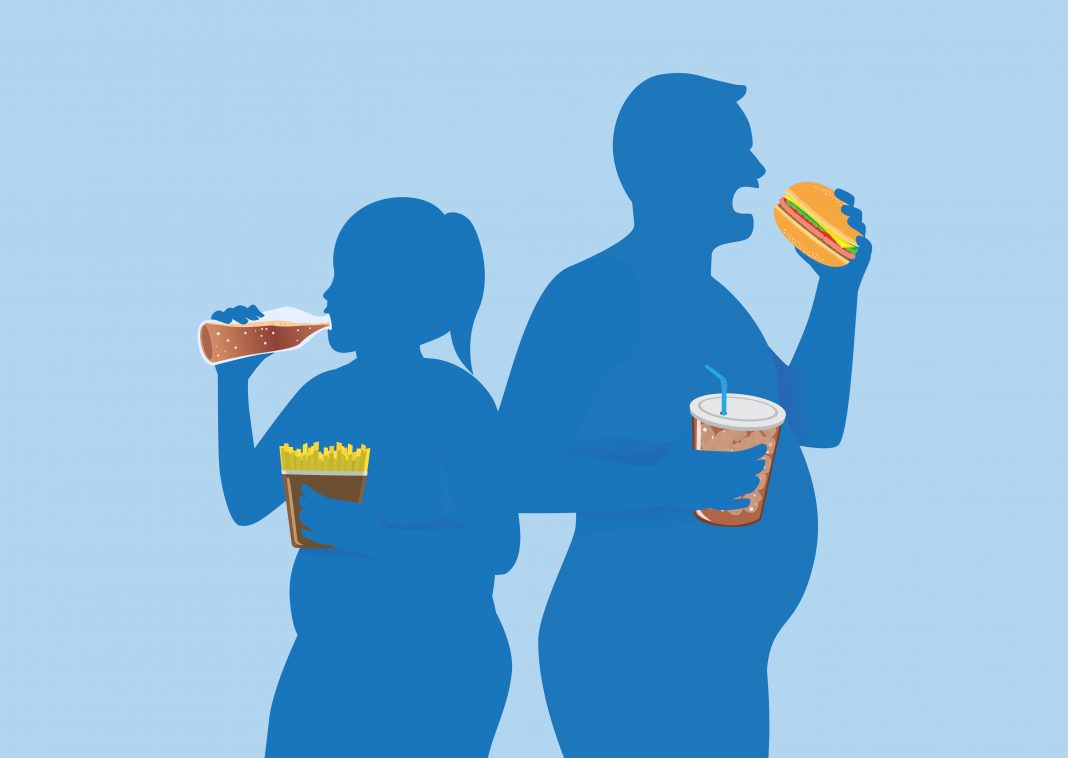Studies in mice by an international team of scientists suggest that inhibiting a single gene could combat obesity and related metabolic disorders by allowing people to eat as much as they want without putting on weight. When the Flinders University-led team deleted the gene, known as regulator of calcineurin 1 (RCAN1), in mice fed a high-fat diet (HFD), the animals didn’t put on weight because their whole body metabolic rate increased.
The scientists are now working to develop RCAN1-targeting drugs that might boost calorie-burning and reduce fat storage in people. “We know a lot of people struggle to lose weight or even control their weight for a number of different reasons,” commented research lead Damien Keating, Ph.D., a professor at Flinders University. “The findings in this study could mean developing a pill which would target the function of RCAN1 and may result in weight loss.”
Reporting their studies in EMBO Reports the scientists say that in evolutionary terms the activity of RCAN1 may have been beneficial, and helped to prevent mechanisms that increase energy expenditure in times of food scarcity. However, they write, “in the face of caloric abundance, RCAN1-mediated suppression of these adaptive avenues of energy expenditure may now contribute to the growing epidemic of obesity.” The Flinders University team, together with colleagues in Australia, the U.S., Chile, and South Korea, described their findings in a paper titled,“Regulation of Calcineurin 1 helps coordinate whole-body metabolism and thermogenesis.”
Obesity is a major global health epidemic that is estimated to reduce life expectancy by as much as 6–20 years, and is associated with an increased risk for type 2 diabetes, cardiovascular disease, and cancer,” the authors wrote. The regulation of whole-body metabolism involves the integration of multiple organ systems, and disrupting this homeostatic balance “underlies the growing epidemic in obesity, metabolic disease, and associated comorbitidies,” the researchers continued.
Scientists have long worked to develop approaches that can boost non-shivering thermogenesis (NST)—the process by which calories are expended as heat, rather than stored as fat—as a mechanism to burn excess calories and so help treat obesity. However, the body operates multiple feedback mechanisms that generally act to suppress unnecessary caloric expenditure. In evolutionary terms, these processes have helped to conserve energy in times of hardship. Mammals have had to cope with pressures of limited food resources and environmental exposure, “developing mechanisms for both long-term storage of calories and their expenditure for functions such as thermogenesis when needed.”
Today, however, these mechanisms may effectively be “maladaptive in current conditions of caloric abundance,” and so act to promote obesity, the researchers wrote. And while on a global level the rise in obesity is driven by multiple factors including socioeconomic pressures, education, and nutritional content, fundamentally, people become obese because they eat more than their bodies need. “On an individual level, the underlying cause lies in an imbalance between calories consumed and calories expended,” the team pointed out. And finding ways to impact on the underlying mechanisms of control isn’t easy. “… control over this deceptively simplistic equation involves a complex network of gene–environment interactions that feed back to establish homeostatic control.”
RCAN1 is an inhibitor of the calcium-activated protein phosphatase calcineurin, which both clinical and genetic data have implicated in mechanisms that regulate metabolism. The Flinders University-led team’s studies have now shown that mice engineered to lack the RCAN1 gene (Rcan1-KO mice) don’t become obese even after prolonged periods on a high-fat diet, and the animals also exhibit improved glucose tolerance. When the researchers looked at databases on different strains of lean and obese mice, they found a correlation between RCAN1 expression in liver and adipose tissue, with bodyweight, triglycerides, and insulin, which fit in with their results in the RCAN1 knockout animals. “Taken together, these data identify the Rcan1 gene as a gene highly correlated with metabolic syndrome, consistent with our studies of the Rcan1-KO mice,” they wrote.
The body harbors two types of fat, brown fat and white fat. White fat is the most abundant type in adults, and acts to store energy, whereas the less abundant brown fat burns energy. The new findings in the knockout mice also indicated that RCAN1 acts by blocking two different mechanisms of NST, one in white fat, and the other in skeletal muscle. The results suggested that blocking the RCAN1 gene can help to convert white fat into brown fat.
“We have already developed a series of drugs that target the protein that this gene makes, and we are now in the process of testing them to see if they inhibit RCAN1 and whether they might represent potential new anti-obesity drugs,” Dr. Keating says. “In light of our results, the drugs we are developing to target RCAN1 would burn more calories while people are resting. It means the body would store less fat without the need for a person to reduce food consumption or exercise more … We really want to pursue this, it’s exciting and we have research funding from the Australian government through the National Health and Medical Research Council to continue to explore viable options. These results show we can potentially make a real difference in the fight again obesity.”


